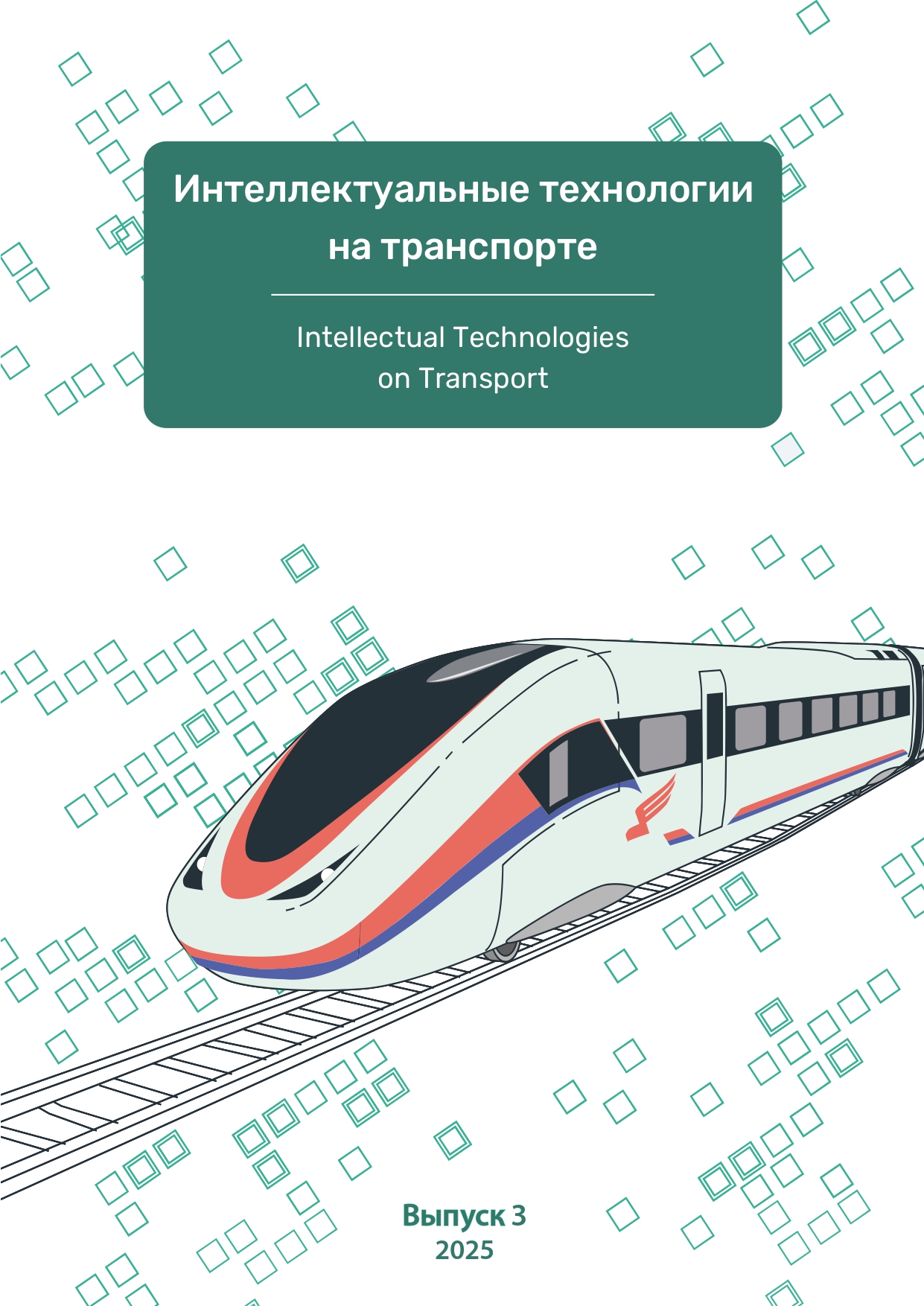employee
Russian Federation
VAK Russia 1.2.1
UDC 656
UDC 004.9
UDC 378
Purpose: to identify methodological limitations of the existing approaches to designing Basic Professional Education Programmes (BPEP) and to develop a conceptual framework for a new mathematical approach aimed at addressing personnel needs for the digital transformation of the transport sector. Methods: systematic and comparative analysis of existing approaches to modelling Basic Professional Education Programmes. The proposed solution employs graph theory and data mining techniques as conceptual tools. Results: a BPEP classification of design approaches was carried out, revealing their insufficient adaptability to the dynamic demands of high-tech industries. A conceptual mathematical model of Basic Professional Education Programme was proposed, systematically integrating the programme internal structure (disciplines, prerequisites) with external requirements derived from professional standards and current labour market data in the transport sector. The model is based on representing BPEP as a weighted directed graph and introducing an integral quality metric. Practical significance: the study provides a scientific and methodological foundation for transitioning from intuitive, expert-based practices to a research-based, data-driven BPEP design. Implementing the proposed approach will enhance the relevance of educational programmes, reduce adaptation time, and address personnel shortages in areas such as autonomous transport systems, intelligent transport management, and digital logistics.
Mathematical modeling, educational program, graph theory, data mining, digital transformation of transport, personnel support, decision support system
1. Halabieh H., Hawkins S., Bernstein A. E., et al. The Future of Higher Education: Identifying Current Educational Problems and Proposed Solutions, Education Sciences, 2022, Vol. 12, Iss. 12, Art. No. 888, 19 p. DOI:https://doi.org/10.3390/educsci12120888. EDN: https://elibrary.ru/QFXGZY
2. Vorobyeva N. A., Noskov S. I. Raschet osnovnykh parametrov uchebnogo plana s uchetom mezhdistsiplinarnykh svyazey [University Curriculum Parameters Calculation with Logical Dependences Between Courses], Fundamentalnye issledovaniya [Fundamental Research], 2012, No. 9, Pp. 894–898. (In Russian) EDN: https://elibrary.ru/PMDOJV
3. Yurchishina M. V., Bushmeleva K. I. Ekspertnaya otsenka grupp svyazannykh distsiplin uchebnogo plana dlya bakalavriata po napravleniyu “Informatika i vychislitelnaya tekhnika” [Expert Assessment of Groups of Related Subjects of the Curriculum for the Bachelor Studies in the Direction “Computer science and engineering”], Innovatsionnye, informatsionnye i kommunikatsionnye tekhnologii (INFO–2023): sbornik trudov XX Mezhdunarodnoy nauchno-prakticheskoy konferentsii [Innovative, Information and Communication Technologies (INFO-2023): Collection of Works of the XX International Scientific and Practical Conference], Makhachkala, Russia, October 01–10, 2023. Moscow, Association of Graduates and Employees of AFEA named after prof. N. E. Zhukovsky, 2023, Pp. 174–178. (In Russian) EDN: https://elibrary.ru/OTJTNL
4. Botov D. S. Intellektualnaya podderzhka formirovaniya obrazovatelnykh programm na osnove neyrosetevykh modeley yazyka s uchetom trebovaniy rynka truda [Intelligent Support Development of Educational Programs Based on the Neural Language Models Taking into Account of the Labor Market Requirements], Vestnik Yuzhno-Uralskogo gosudarstvennogo universiteta. Seriya “Kompyuternye tekhnologii, upravlenie, radioelektronika” [Bulletin of the South Ural State University. Series “Computer Technology, Automatic Control, Radio Electronics”], 2019, Vol. 19, No. 1, Pp. 5–19. DOI:https://doi.org/10.14529/ctcr190101. (In Russian) EDN: https://elibrary.ru/VTUUUE
5. Zykova T. V., Kytmanov A. A., Noskov M. V., Khalturin E. A. Primenenie silovogo algoritma vizualizatsii grafov dlya analiza uchebnykh planov obrazovatelnykh programm vysshego obrazovaniya [Application of a Force-Directed Graph Drawing Algorithm for the Analysis of Curricula of Educational Programs of Higher Education], Sovremennye informatsionnye tekhnologii i IT-obrazovanie [Modern Information Technologies and IT-Education], 2023, Vol. 19, No. 1, Pp. 104–116. DOI:https://doi.org/10.25559/SITITO.019.202301.104-116. (In Russian) EDN: https://elibrary.ru/KZHOWJ
6. Lobashev V. D. Funktsii, algoritmy i argumenty modeli protsessa otsenivaniya [Functions, Algorithms and Arguments of Evaluation Process Model], Integratsiya obrazovaniya [Integration of Education], 2015, Vol. 19, No. 1, Pp. 82–92. DOI:https://doi.org/10.15507/Inted.078.019.201501.082. (In Russian) EDN: https://elibrary.ru/TLIORP
7. Antonov V. V., Beltyukov A. P., Kulikov G. G., Rodionova L. E. Metod formalnogo ontologicheskogo modelirovaniya i realizatsii funktsiy sistemnoy inzhenerii na osnove printsipa dostatochnogo raznoobraziya strukturnykh svyazey [Formal Representation of the Model of Realization of the Functions of System Engineering Based on the Principle of the Enough Diversity of Structural Connections], Vestnik Yuzhno-Uralskogo gosudarstvennogo universiteta. Seriya “Kompyuternye tekhnologii, upravlenie, radioelektronika” [Bulletin of the South Ural State University. Series “Computer Technology, Automatic Control, Radio Electronics”], 2019, Vol. 19, No. 4, Pp. 13–26. DOI:https://doi.org/10.14529/ctcr190402. (In Russian) EDN: https://elibrary.ru/STOHYF
8. Yarullin D. V. Intellektualnaya sistema upravleniya podgotovkoy IT-spetsialistov na osnove denotativnoy analitiki [Intelligent Control System for IT Specialists Training Based on Denotative Analytics], Prikladnaya matematika i voprosy upravleniya [Applied Mathematics and Control Sciences], 2022, No. 3, Pp. 141–164. DOI:https://doi.org/10.15593/2499-9873/2022.3.08. (In Russian) DOI: https://doi.org/10.15593/2499-9873/2022.03.08; EDN: https://elibrary.ru/JMEAGT
9. Spiridonov R. S. Arkhitektura prilozheniya dlya podderzhki razlichnykh tipov algoritmicheskikh zadach i ikh avtomatizirovannoy proverki v sistemakh elektronnogo obucheniya [Application Architecture for Support of Multiple Question Types and Their Automated Grading in e-Learning Systems], Izvestiya YuFU. Tekhnicheskie nauki [Izvestiya SFedU. Engineering Sciences], 2016, No. 3 (176), Pp. 87–96. (In Russian) EDN: https://elibrary.ru/WABVXH
10. Kolybenko E. N. Distinction Between Concepts of “Structural-Functional-Parametric Model” and “Parametric Model” of Information Knowledge Objects, Vestnik of Don State Technical University, 2020, Vol. 20, No. 1, Pp. 106–111. DOI:https://doi.org/10.23947/1992-5980-2020-20-1-106-111. EDN: https://elibrary.ru/MZCHXW
11. Telegina M. V., Yannikov I. M. Programmnaya obolochka dlya sozdaniya ekspertnykh sistem GrafExpert [Modeling Environment for Creation of Expert Systems GrafExpert], Izvestiya YuFU. Tekhnicheskie nauki [Izvestiya SFedU. Engineering Sciences], 2014, No. 6 (155), Pp. 67–73. (In Russian) EDN: https://elibrary.ru/SFLDFH
12. Shtager E. V., Berezhnova E. I. Printsipy konstruirovaniya didakticheskogo obespecheniya bazovykh vuzovskikh distsiplin [Design’s Principles of Didactic Provision of Basic University Disciplines], Sovremennye naukoemkie tekhnologii [Modern High Technologies], 2021, No. 8, Pp. 235–239. DOI:https://doi.org/10.17513/snt.38810. (In Russian) EDN: https://elibrary.ru/BLJXYS
13. Preobrazhenski A. P., Marenkov N. M. Otsenka stepeni obuchennosti matematike i informatike [Assessment of the Degree of Learning in Mathematics and Computer Science], CONTINUUM. Matematika. Informatika. Obrazovanie [CONTINUUM. Mathematics. Computer science. Education], 2024, No. 3 (35), Pp. 60–68. DOI:https://doi.org/10.24888/2500-1957-2024-3-60-68. (In Russian) EDN: https://elibrary.ru/DNAEBG










